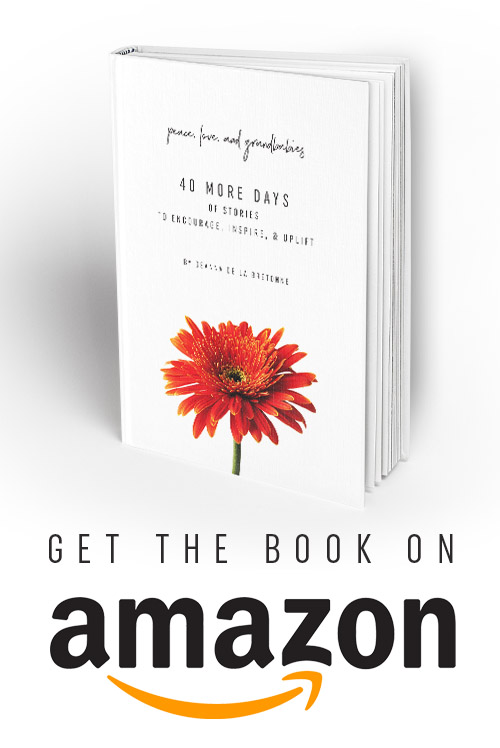I’m a little late jumping onto the homemade-sourdough-bread-making craze that has absorbed most of our social media feeds for the past 12 months. I had a sourdough starter for a short period of time when my boys were young, so around 35 years ago. It did not go well. I let it sit on my window sill to remind me to feed it. But I never got all the instructions about how to do that exactly, and then I got busy with life as a stay at home mom, running the neighborhood “Koolaide” house! (If you’re around my age, you totally understand what that means!) My poor little starter had been abandoned.
By the time I turned my attention back to that little puddle of grey goo, it had a lovely green mold topping and it smelled awful! From that point on, it’s always been easier to buy a perfect loaf at the store than go through that once more.
But I was encouraged to try it again just recently after visiting my youngest son in Oklahoma. I have a lot more time now, my garden is on autopilot until the busy spring season kicks into high gear, and I’m ready to add another fun adventure to my retirement repertoire!
It was time to get my own sourdough starter going again! I did the research on line, took notes on my son David’s experience – he’s an amazing cook, by the way! – and felt ready to dive in. I started with one recipe, got impatient with the slow results, so I switched midway to another recipe I found from the many “sourdough experts” on YouTube. I also incorporated my notes from David’s experience so I ended up with a confusing, scribbled on notepad with more rules and guidelines for making the “perfect loaf” than there are types of flowers for my garden! I was totally frustrated!
When it was time, according to all the “experts”, to bake my magical loaf, I followed yet another recipe for making the bread itself. It didn’t look like my son’s or any of the YouTube experts’ at all. It was flat and sticky and I worked up a sweat trying to knead it into submission. I had used every last drop of the starter I had worked on for the last 2 weeks, which isn’t supposed to happen. I finally gave up, stuck it on a baking sheet, shoved it in the oven and crossed my fingers, hoping for the best.
What came out of the oven was a flat, spread out, uncooked in the middle, super dense loaf of something…but it sure wasn’t the sourdough I was expecting! As I stood there looking at the result of the last 15 days of my life, I had the urge to just quit. Maybe I needed to accept that there are just some things I’m not capable of doing.
But then, almost like clockwork, I felt God nudging me as if to say, “there’s a lesson to be learned here.” So I asked God what He wanted me to learn and went straight to my Bible for His direction. Do you know what I found? I landed on all the instructions to the Israelites when they were learning how to live as a nation set apart from the world and totally devoted to God. Everything started with the Ten Commandments; ten very clear, concise commands that would set Israel apart from the current inhabitants of the land.
Then there was verse after verse that held specific instructions about the holy sacrifices that were not to include yeast. Next, because I like to include New Testament reading, I came upon Jesus’ warnings about staying away from the yeast of the religious leaders of the day.
I never fully understood Jesus’ comments about “beware yeast” and all the Old Testament’s constant warnings about not using yeast in sacrificial offerings, so I’ve always just kind of skimmed over them. I thought maybe they were for a different time and culture than I was living in and didn’t pertain to my Christian life today. But since I felt pretty certain God wanted to teach me something, I dug in a little and asked Him to open my eyes.
It takes a long time to make yeast. It’s used as leaven to raise the dough you’re adding it into and makes the finished product light and fluffy. When made correctly and in the right proportions, it adds life to the freshly baked bread.
It didn’t always come in handy little packets that could be bought at the store. It had to be created by combining water and flour and allowing it to ferment. To make your own starter, or leaven, you have to be devoted to it, focusing on the minute details – feeding it at the same time each day, paying attention to water temperature, cleanliness of the tools used, and how it’s stored. It takes a long time and attention to nurture that little lump of growing yeast. It’s a tangible thing that requires tangible tasks to create.
The thing about yeast is this: if it’s made the way it was made for thousands of years, it can become all consuming. You can get so caught up in all the details of creating the perfect starter and caring for it that it would be easy to forget the whole reason for yeast is to create a fluffy loaf of yummy bread! They should work together to create that wonderful, life sustaining loaf.
In other words, things get out of whack when the focus is on the making of the leaven or yeast rather than on the actual bread.
During the holy festivals God planned out for the Israelites, He told them to get rid of the yeast. He didn’t want anything to take the focus off of His purpose. The Israelite nation was to focus on God and what He had accomplished for them and through them. They needed anything that would pull their attention away from God removed from their camps.
In the New Testament, Jesus called the religious leaders “yeast” and told His followers to beware becoming like them. Rather than accepting and using the commands of God to create a better, more holy life, their focus had changed and was now on the rituals and rules of religion, not the Creator or, as Jesus called himself, the Bread of Life.
If we use yeast to make our bread tasty, why would Jesus say to stay away from the yeast of the religious leaders? It’s not that the actual yeast is bad. But when time and energy is focused on only a small bit of the recipe, the bigger plan of enjoying that warm, fresh-from-the-oven slice of bread is lost.
I believe because the religious leaders had become so consumed with the rules and tasks involved in becoming “religious”, they neglected to remember that behaviors and following of rules would not make them holy. They spent all their time focusing on things like their ritual washing of hands and cups while Jesus said their hearts were filthy from sin. They spent all their energy creating and nurturing their own starter, but never used it to make any bread!
Bread sustains life. Yeast sustains bread. Both have an important role. But you can’t believe that the yeast is the most important thing or you’ll never have Life! When Jesus calls Himself the Bread of Life, He is reminding us that He is the most important thing. The commands God gave out in the wilderness to the young nation of Israel was the start of the recipe. Jesus’ coming to fulfill all the promises God made to Israel completed the recipe. The Bread of Life is all we need to truly be sustained.
I haven’t given up on my sourdough bread making skills. I’ve started a new batch of starter. But I’m sticking with the basics; one recipe all the way through the end. I’m being patient and trusting the process. It’s been 4 days and I can tell you that it already appears to be better than my first effort; although I really won’t know until I use this little starter to make a loaf of bread. But I’m keeping my focus on the Bread itself, and remembering that the yeast I’m making with my starter is only a part of the recipe. When I use it correctly and in the right proportions I believe it will only add to the tastiness of the final product!
I love God’s lessons, even the ones that take me 50 years to understand!
Jesus replied, “I am the bread of life. Whoever comes to me will never be hungry again. Whoever believes in me will never be thirsty.” – John 6:35



